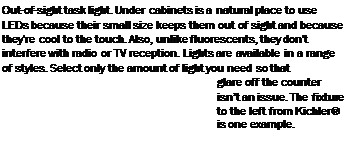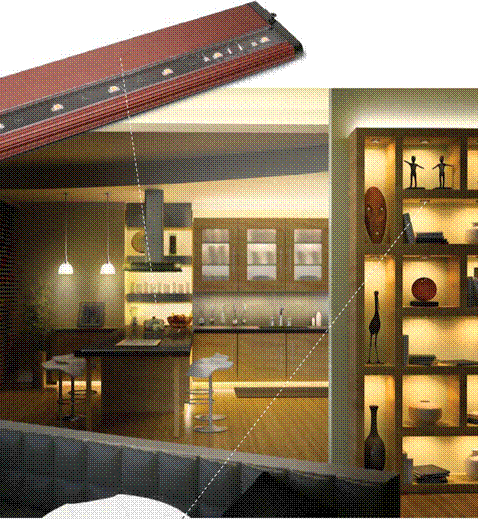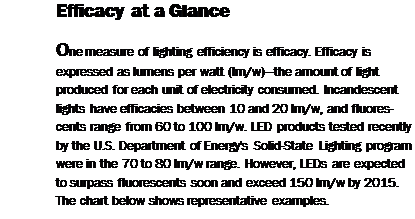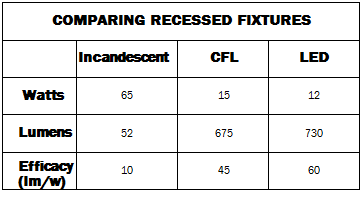Light-Emitting Diodes Are the Future
LEDs are a Silicon Valley technology, manufactured in a clean room, just like a computer chip. Electrical current runs through the 1-sq.-mm chip, exciting the electrons and creating light. A small bulblike cover focuses the light. LEDs can’t actually produce white light; white light must be created either by combining colors or by using a phosphor coating inside the bulb.
The lighting industry is betting heavily on forging ahead with significant advances in white-light LED technology in the next few years. Many of today’s LEDs, however, already perform well when used in the appropriate location.
 Manufacturers describe LEDs as cool – operating lamps. While it’s true that the lit end of an LED is cool to the touch, the semiconductors do produce heat. And just as computer chips require cooling to perform
Manufacturers describe LEDs as cool – operating lamps. While it’s true that the lit end of an LED is cool to the touch, the semiconductors do produce heat. And just as computer chips require cooling to perform





Replacement bulbs. Most LED replacement bulbs are directional for accent or task lights, such as the MR16 replacement from Nexxus, above left. A new generation of LEDs is trying to offer multidirectional ambient light with replacements for fluorescent tubes (from Ilumisys®, above center) and for the common table lamp (from Philips®, above right).
properly, LEDs need thermal management. The heat sink, usually a number of large aluminum fins located near the base of the lamp, is a critical component of an LED.
LEDs are already more efficient than incandescent bulbs, producing approximately 60 to 70 lumens per watt, and manufacturers expect efficiency to surpass that of CFLs soon. Their 50,000-hour average life span translates into 34 years when used four hours a day. There are other advantages to LEDs’ solid-state engineering as well: They are immune to vibration, and their performance improves in cold temperatures, making them ideal for outdoor applications.
Cost is currently the biggest drawback to LEDs. A screw-in LED replacement for a
![]()
![]()

 recessed light costs about $120, but remem
recessed light costs about $120, but remem
ber that LEDs are the lighting equivalent
of a computer chip: Just as Intel® founder Gordon Moore predicted that chip capacity would double every two years (Moore’s Law), Haitz’s Law (named for scientist Roland Haitz) states that every decade, LED prices will fall by a factor of 10 while performance will increase by a factor of 20.
Still, a word of caution is appropriate. There are some well-engineered LED bulbs and fixtures on the market, but with so many manufacturers jumping on the band-


wagon, there are plenty of LEDs with harsh light and poor switching and dimming response. It’s a good idea to evaluate these products carefully before purchasing.






Leave a reply